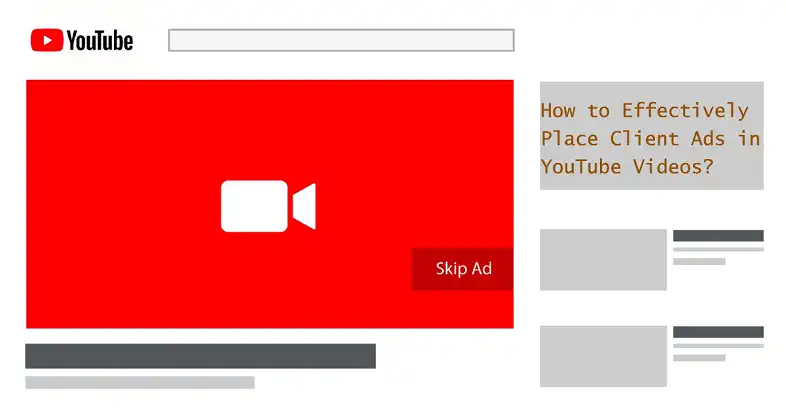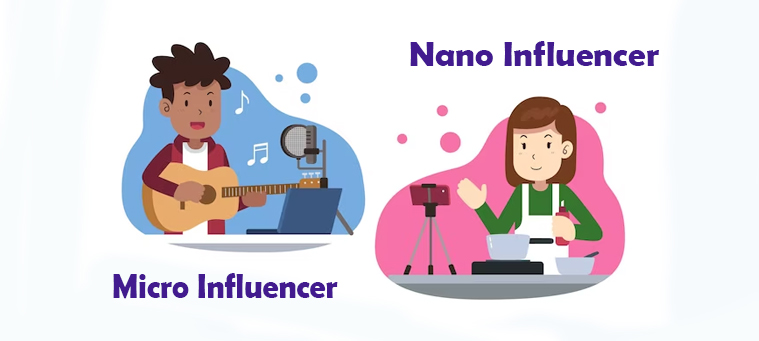
With over 2 billion logged-in monthly users, YouTube presents a golden opportunity for businesses to showcase their products and services. However, the key to success lies not just in creating ads, but in placing them effectively. In this article, we’ll explain everything there is to know about YouTube ad placement to ensure effective placement so that your clients’ messages resonate with the right audience at the right time.
How the YouTube Advertising Ecosystem Works
YouTube’s advertising ecosystem is vast and varied, offering multiple formats to suit different marketing objectives. Understanding these formats is crucial for effective ad placement.
Skippable Ads: These are the most common type, allowing viewers to skip after 5 seconds. They’re ideal for longer, story-driven content that can hook viewers quickly. On average, skippable ads that are 15-30 seconds long tend to perform best, with completion rates around 30%.
Non-Skippable Ads: These short ads (typically 15-20 seconds) must be watched in full before the main video plays. They’re great for concise, impactful messages but should be used judiciously to avoid viewer frustration.
Bumper Ads: At just 6 seconds, these non-skippable ads are perfect for quick brand awareness campaigns. They boast an average view-through rate of 70%.
Discovery Ads: These appear alongside search results and recommended videos, functioning similarly to Google Search ads. They typically see click-through rates of 0.5-1%.
Video Action Campaigns: These drive specific actions like app installs or website visits, combining the reach of YouTube with the precision of Google’s action-oriented ad formats.

Step 1: Crafting Compelling Ad Content
The success of your ad placement strategy hinges on the quality of your ad content. Here’s how to create ads that capture attention and drive action:
- Write Persuasive Copy: Your ad copy should be concise, compelling, and benefit-focused. Instead of saying “Our shoes are comfortable,” try “Experience all-day comfort with our revolutionary shoe design.” Use power words that evoke emotion and create urgency.
- Design Visually Striking Ads: Visual appeal is crucial on YouTube. Use high-quality imagery, vibrant colors, and clear, readable text. Ensure your visuals align with your brand identity for consistency across platforms.
- Incorporate Strong CTAs: Your call-to-action should be clear and actionable. Instead of a generic “Click Here,” use specific phrases like “Shop Now” or “Start Your Free Trial.” Place your CTA strategically – for skippable ads, include it within the first 5 seconds.
- Optimize Ad Length: Tailor your ad length to the chosen format. For skippable ads, front-load your message in the first 5 seconds. For bumper ads, focus on a single, memorable message.
- A/B Testing: Continuously test different elements of your ads. Try variations in copy, visuals, CTAs, and even ad length. YouTube’s experiments feature allows you to test up to five different video variations.
Step 2: Targeting the Right Audience
Effective ad placement starts with reaching the right viewers. YouTube offers robust targeting options to help you connect with your ideal audience:
- Demographic Targeting: Narrow your audience based on age, gender, parental status, or household income. For example, a luxury brand might target users aged 35-54 with high household incomes.
- Interest-Based Targeting: Reach users based on their interests and online behaviors. If you’re advertising fitness equipment, you might target users interested in “health & fitness” or “weight training.”
- Custom Intent Audiences: Create audiences based on keywords they’ve searched on Google. For a travel agency, you might target users who’ve searched for “beach vacation packages” or “best European destinations.”
- Remarketing: Re-engage users who’ve interacted with your brand before. This can increase conversion rates by up to 50%.
Table: YouTube Targeting Options Comparison
| Option | Pros | Cons | Best For |
| Demographic | Precise audience segmentation | May miss potential customers outside demographics | Products with clear demographic appeal |
| Interest-Based | Reaches users based on preferences | Interests may change over time | Niche products or services |
| Custom Intent | Highly targeted based on search behavior | Requires ongoing keyword research | Products related to specific search queries |
| Remarketing | High conversion potential | Limited to users who’ve interacted before | Nurturing leads and closing sales |
Step 3: Optimizing Ad Placement
Strategic ad placement maximizes visibility and impact. Here’s how to optimize your placements:
- Understand YouTube’s Ad Inventory: Familiarize yourself with available placements, including in-stream, in-search, and in-display options.
- Choose Optimal Placements: Align your placements with your target audience’s viewing habits. For example, if targeting younger audiences, consider placements on popular gaming channels.
- Implement Frequency Capping: Prevent ad fatigue by limiting the number of times a user sees your ad. A good starting point is capping frequency at 3-5 impressions per user per week.
- Ad Scheduling: Optimize delivery based on when your audience is most active. For B2B ads, weekday business hours might be most effective, while consumer products might perform better in the evenings and weekends.
- Contextual Targeting: Place ads on videos relevant to your product or service. A cooking utensil ad would be well-placed on cooking tutorial videos.
Next Step: Measuring and Analyzing Performance
Data-driven decision making is crucial for optimizing YouTube ad placement. Key metrics to track include:
- View Rate: The percentage of people who chose to watch your ad. A good benchmark is around 15-25% for skippable ads.
- Click-Through Rate (CTR): The percentage of viewers who clicked on your ad. Aim for a CTR of 0.5-1% for in-stream ads.
- Conversion Rate: The percentage of ad viewers who completed your desired action. This varies widely by industry but generally ranges from 1-3%.
- Cost Per View (CPV): The average cost you pay when a viewer watches 30 seconds of your video ad (or the full duration if it’s shorter than 30 seconds).
Use YouTube Analytics to gain insights into these metrics and more. Regularly analyze this data to identify trends and optimize your campaigns accordingly.
Remember, the key to effective YouTube ad placement lies in understanding your audience, creating compelling content, and continually optimizing based on performance data. By following these guidelines and staying adaptable, you’ll be well-equipped to maximize the impact of your clients’ YouTube advertising campaigns.

